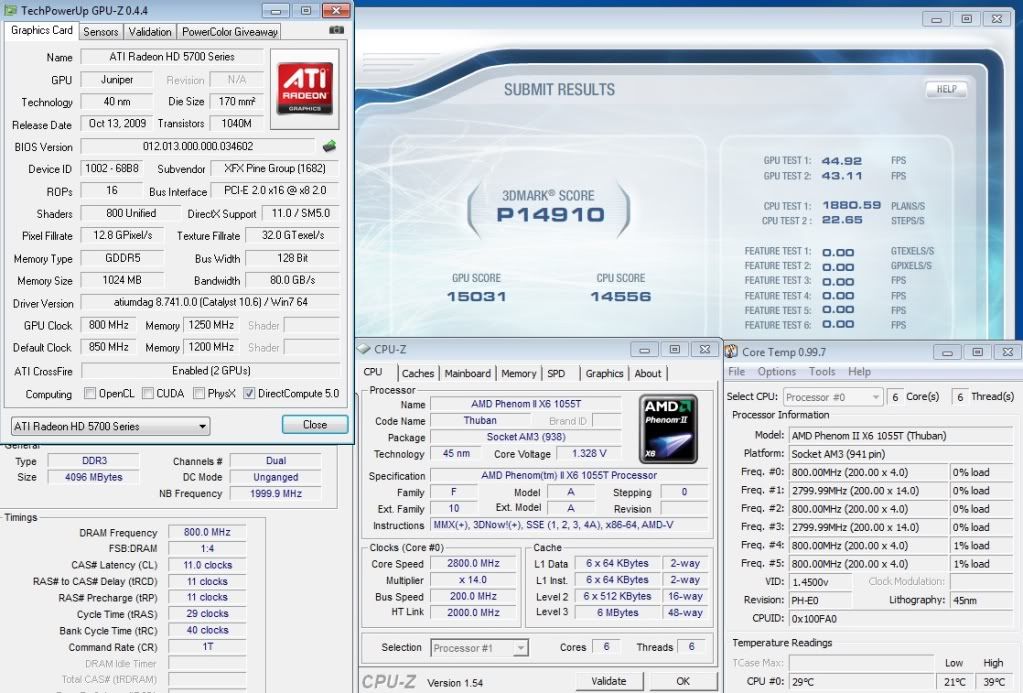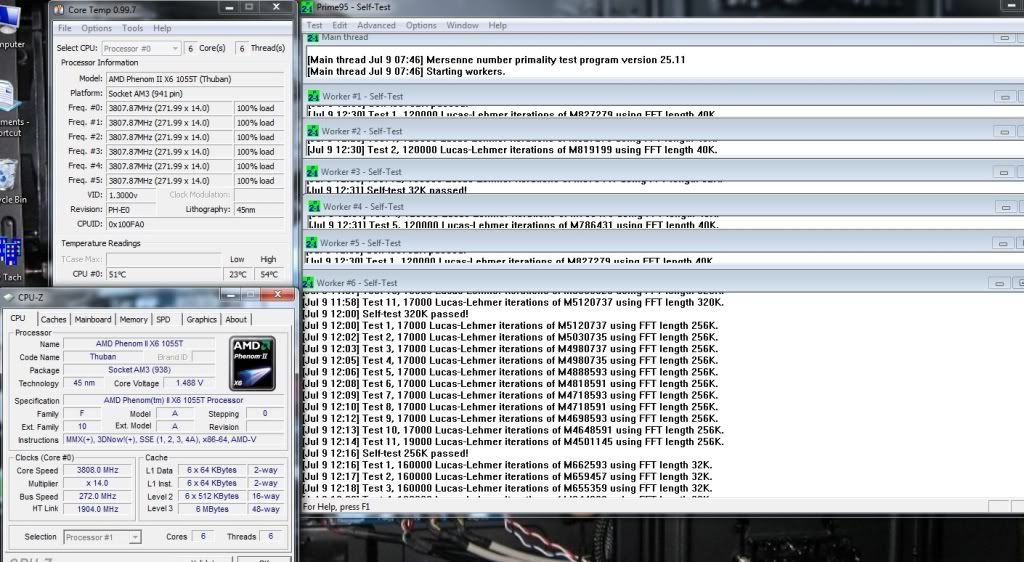well generally you start out Overclocking the CPU as that provides the most substantial and seeable gains, i underclock my RAM if possible and loosen timings (8-8-8-22 instead of 7-7-7-20) to make sure that the only thing i'm dealing with is the CPU stability.
CPU:
Heavy gain in everyday use as well as gaming
rule #1, if you're on stock cooling get an aftermarket cooler as soon as possible -looks like you're on water which is excellent for Overclocking
rule #2, MAKE SURE you keep load temps
under 60C no matter what frequency because the chip does not like running that hot, 56C load is fine
rule #3, disable onboard graphics if applicable because enabled leads to much higher Northbridge temps that can severely limit overclockability
how I start out is on stock multiplier (14x) add 20MHz to the bus, boot up, check stability, add 10MHz more, 10MHz again, until it starts crashing, then start bumping the voltages, generally add one notch to CPU & NB at a time, while bumping PLL and other sub voltages like so:
throughout your testing, run
prime95 x64 or
32bit blend to ensure stability and verify max temp on each frequency is under 60C usually this takes 5minutes to find out instability and achieve close to max temperature, but once you think you are done clocking, run for AT LEAST 2 hours to verify stability
200MHz, stock everything
220MHz, stock voltages, lowered NB & HTT frequency multiplier to stay close to 2000MHz for each (you can bump them up later, or not, they dont matter too much) verify them both being less than 2300MHz each time you enter BIOS
230MHz, stock voltages, still runs fine
240MHz, bump CPU-PLL,CPU-NB, CPU vcore, and NB/SB/HTT all by one notch
250MHz, keep voltages
255MHz, bump CPU-NB, CPU Vcore
260MHz, bump CPU-NB, CPU Vcore
265MHz, bump CPU-NB, CPU Vcore, PLL, NB/SB/HTT one notch each
270MHz, bump CPU-NB, CPU Vcore, PLL, NB/SB/HTT one notch each
275MHz, bump CPU-NB, CPU Vcore two notches each - this is because the upper end of the overclocking spectrum for Phenom II's is and has always been very temperamental requiring big voltage adjustments to maintain stability, I currently run 1.625v for 24/7 clocks, but
only because i have good cooling to deal with the heat
also I
Disable Turbo because with a big overclock on all the cores to begin with, turbo does very little aside from directly causing instability
also disable C1E or any other power saving options
of course the above is a generalization for MY system not yours, and all CPUs and motherboards overclock differently (even the same models) you have to play it by ear so to speak, and it takes time
RAM:
little gain in normal use
RAM is very finnicky on AMD systems because there is a very limited amount of CPU/RAM Bus frequency options, basically either 1600-1333-1066 or 800 for any AM3 motherboard and all based on 200MHz bus (200x4=800MHz/ 200x5.33=1066/ 200x6.66=1333/ 200x8=1600 for standard DDR3 1600MHz (PC3 12800)) as you overclock the CPU ensure the RAM frequency is within 100MHz of or under the factory spec (up to ~1700MHz or as low as 1300MHz for a 1600MHz kit) as frequency is not that big of a deal, so much as timings they are running at (a 1600MHz 9-9-9-24 kit is much slower than the same kit at 1333 or even 1250 7-7-7-21) i currently run 1.5v 1600MHz CL9 Ripjaws at 1450MHz 7-8-7-21 for my 3.808GHz OC (272x14 for CPU, 272x5.33 for RAM)
-higher Frequency =slightly higher voltage
-tighter timings = slightly higher voltage
the thing i hate the most about tweaking RAM is that 90% of the time that your RAM is unstable, you will have to clear CMOS and reset every settings which is why i ignore the RAM entirely once it is at a nice underclock and loose timings, then once i have a solid CPU overclock i take a picture of the cpu settings screen of the BIOS and then start working
video card:
moderate gains
every video card is different and it's all "luck of the draw" but for 5770's i'd say 920/1350MHz should be stable for everyday use if you crank the fans up, i personally do not overclock video cards during normal use, only when benchmarking specifically and graphics cards can run very hot and be very loud and without much gain but run
Furmark v1.8.2 multiple GPU stability test for 10-20 minutes and if it works fine then you're set
that's about all i got in my noggin







